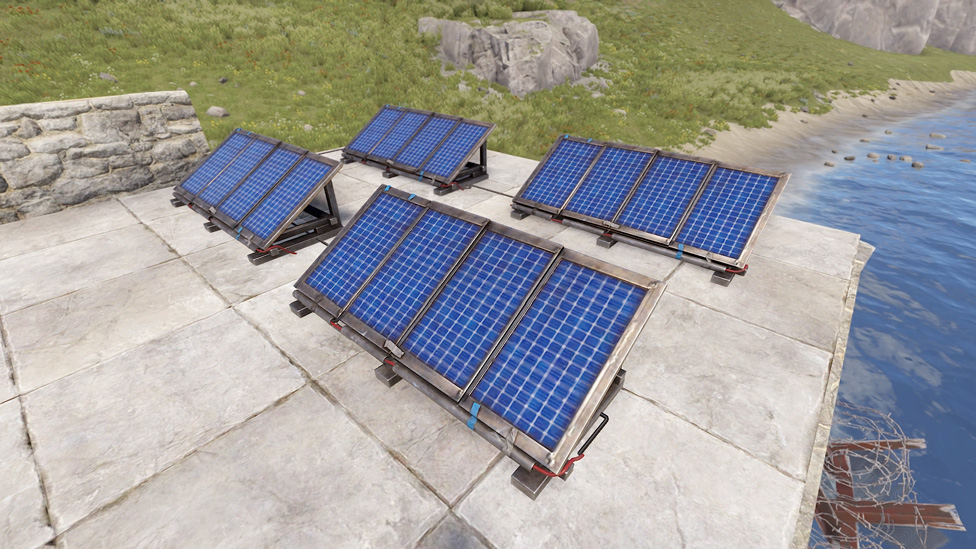Electricity in Rust

Make Your Own Rust Server
Managing Rust's power means mastering its pieces. The game is full of things to connect and combine. They're the key to a strong electric base. From a generator to a circuit, every piece matters. Stick with us. We're explaining each bit to help you build an unstoppable system.
Looking for the best Rust server hosting? You're in the right place! At Scalacube, our job is to give excellent services for avid Rust server fans. Whether you're an experienced player or a beginner, our devoted servers are created to cover all your Rust hosting requirements.
Experience flawless multiplayer gaming with our tweaked Rust MP hosting solutions. How do I make a Rust server? Scalacube makes it simple with easy-to-understand tools and unmatched support.
Our Rust dedicated servers prioritize efficiency, guaranteeing low-delay connections and superior stability. Leave server-related issues behind and focus on mastering the Rust gaming environment. Trust Scalacube for your Rust hosting needs, providing dependability and unrivalled performance. Boost your Rust multiplayer sessions with Scalacube—where hosting matches brilliance.
Electric Parts of Rust
Generators: Rust's HeartbeatGenerators are essential. They turn low-grade fuel into power. Small and large, each kind helps. Solar Panels and Wind Turbines use nature's energy. Use them wisely to maximize your power.
Tool Time: Wiring Made Easy
In the game Rust, the Wire Tool comes in handy when setting up an electrical grid. Connecting generators and batteries is its special job. The Wire Tool helps the electricity flow in your base. But remember, a smart, efficient setup helps avoid wasted power.

Batteries: Charged Up for the Night
Rust's world isn't always sunny. That's where batteries help. They store extra power generated during the day for use when it's dark or cloudy. Clever use of batteries keeps your base powered up constantly, even in crucial moments.Up Your Game: Advanced Circuits
Moving forward in Rust, basic setups may fall short. Advanced circuits are your go-fors. Tools like the Root Combiner and the Electrical Branch can fine-tune your power distribution. These clever bits prioritize key systems over others.
Try Before You Apply: The Rust Electricity Simulator
Ahead of using your electrical designs in Rust, try them in a simulator first. This tool reproduces your setup's performance, showing potential issues and suggesting improvements. No need to use up in-game resources upfront. It's your personal virtual practice area for electricity projects.
Learn to Power Up in Rust
Ready to power your Rust base? Let's walk through how to start a basic electric system using Rust's electric parts.The First Step: Make Some Power
To kick things off, find a good generator. Small ones can power or kick-start a base. For bigger bases or projects, choose a bigger one. Keep in mind, your generator needs fuel. If it's a solar panel or wind turbine, sunlight or wind is your fuel.
Step Two: Connect Your Base
Now pick up your Wire Tool. Connect the generator to important items: lights, doors, or more generators. Watch your wiring- too much can cause power problems. Use branch circuits to help distribute power effectively.
Step Three: Add Batteries
Batteries keep the lights on when the generator can't. Connect them to your generator and power-hungry devices. They'll store extra power for those "just in case" moments.
Step Four: Go for Advanced Wiring
Got a bigger base? Advanced circuits can keep your power under control. Use tools like the Root Combiner for prioritizing key systems and the Electrical Branch for power control across your base.
Step 5: Simulator Testing
Before finalizing your electrical setup in Rust, use a simulator to test its efficiency. Identify potential issues, tweak your design, and ensure that your power system meets the demands of your base. This proactive approach can save valuable in-game resources and prevent power-related mishaps.

Experience flawless multiplayer gaming with our tweaked Rust MP hosting solutions.
How do I make a Rust server?
Scalacube makes it simple with easy-to-understand tools and unmatched support.
How do I connect multiple generators in Rust?
To connect multiple generators, use the Wire Tool. Link each generator to a central power distribution point, ensuring that power is evenly distributed across your base.
Can I use both solar panels and wind turbines in the same setup?
Yes, you can. Combining solar panels and wind turbines diversifies your power sources, providing consistent electricity, especially in areas with varying weather conditions.
What is the purpose of the Root Combiner in Rust electricity?
The Root Combiner allows you to prioritize power distribution. By connecting it to multiple power sources, you can designate which systems receive power first, ensuring essential devices always remain operational.
How do I prevent power loss in my Rust electricity setup?
Minimize power loss by keeping wiring distances short and using efficient routing. Utilize branch circuits strategically to manage power distribution, preventing unnecessary loss between components.
Conclusion
Mastering electricity in Rust is not just a survival necessity; it's a gateway to thriving in the harsh environment. This guide has provided a comprehensive understanding of Rust electricity components, a step-by-step tutorial for setting up a basic system, and answers to common FAQs. Armed with this knowledge, you can electrify your base, ensuring your dominance in the unforgiving world of Rust. Whether you're harnessing the power of the sun or the force of the wind, may your Rust journey be illuminated and electrifying.Experience flawless multiplayer gaming with our tweaked Rust MP hosting solutions. How do I make a Rust server? Scalacube makes it simple with easy-to-understand tools and unmatched support.
Make Your Own Rust Server
Copyright 2019-2025 © ScalaCube - All Rights Reserved.